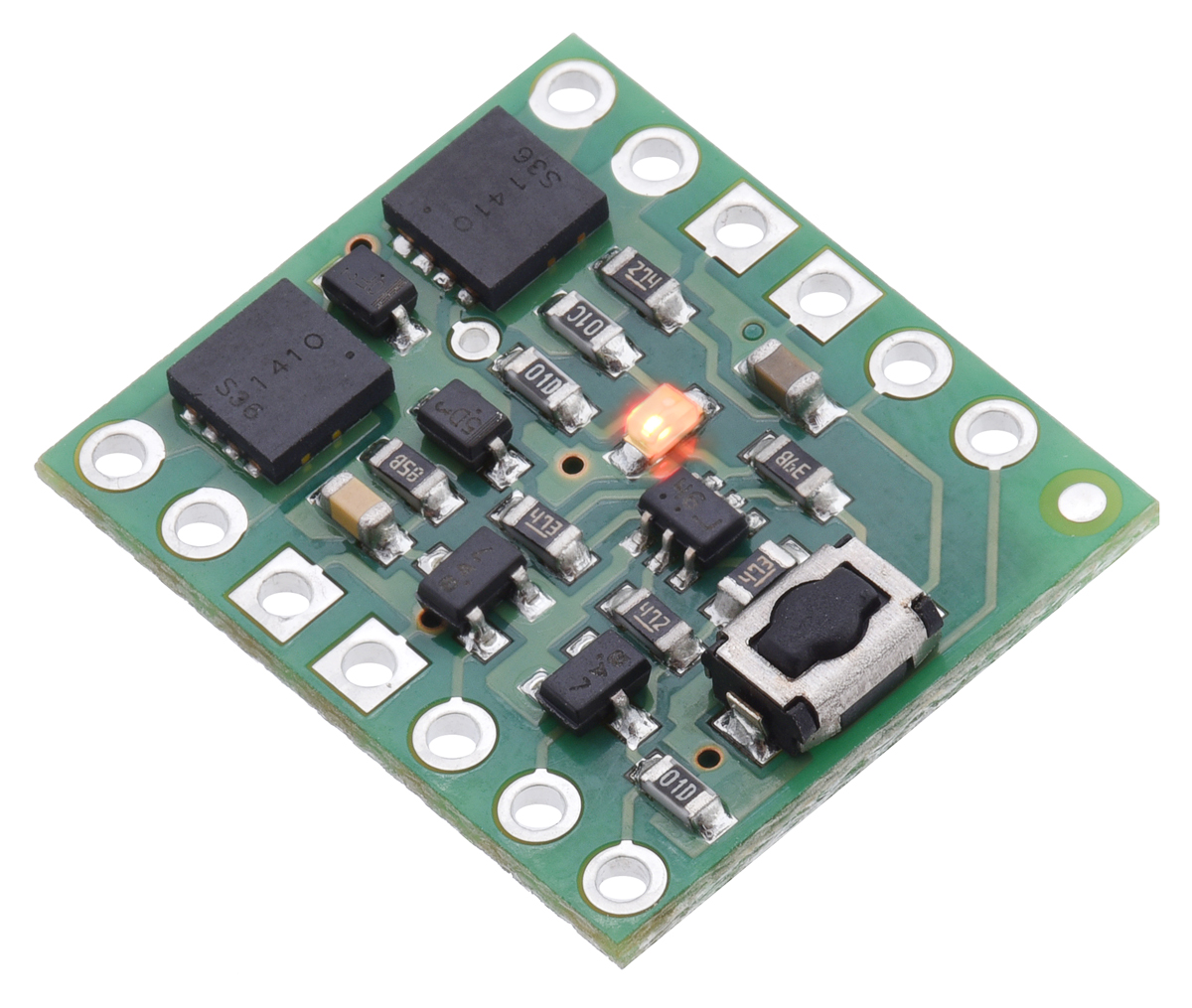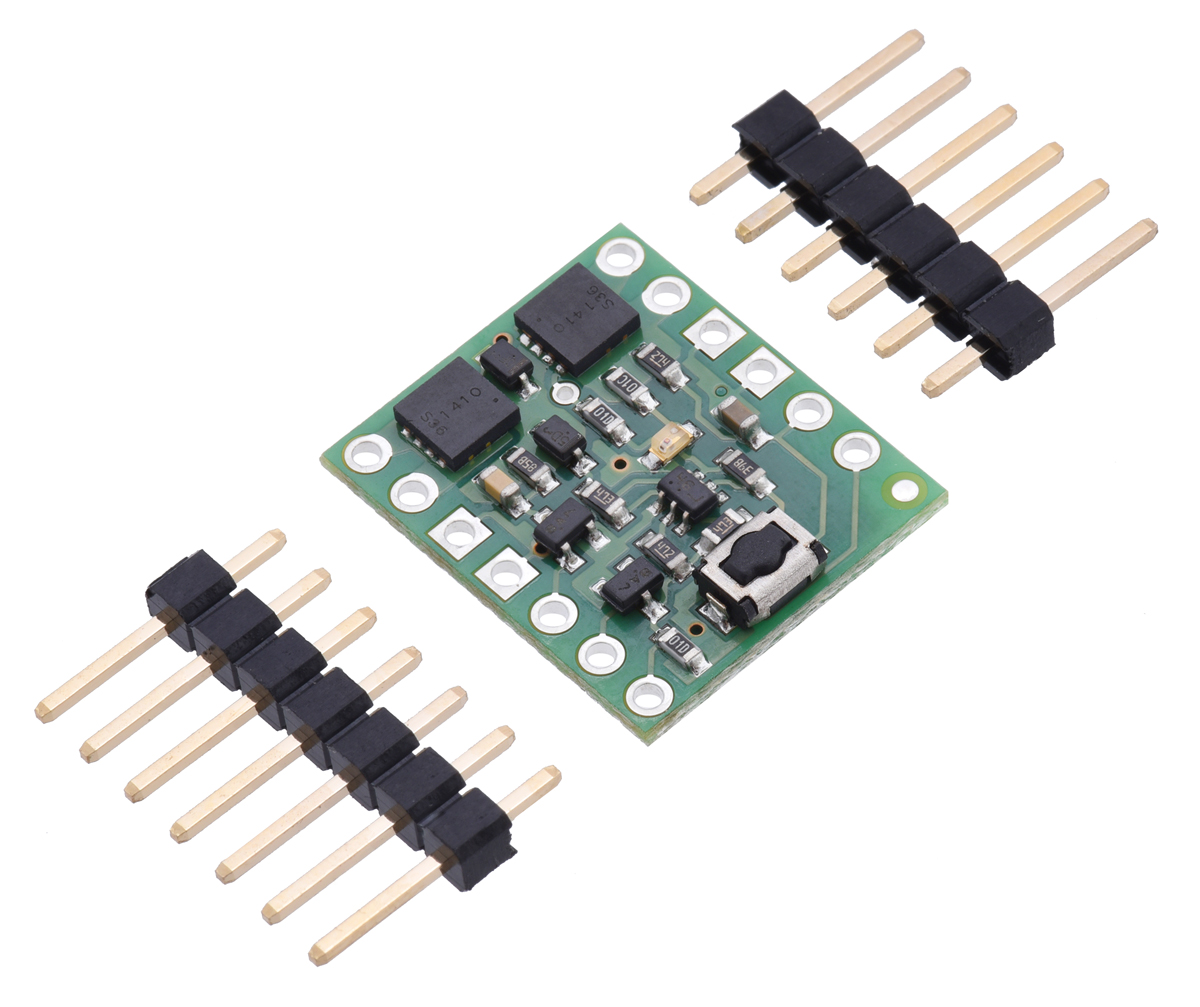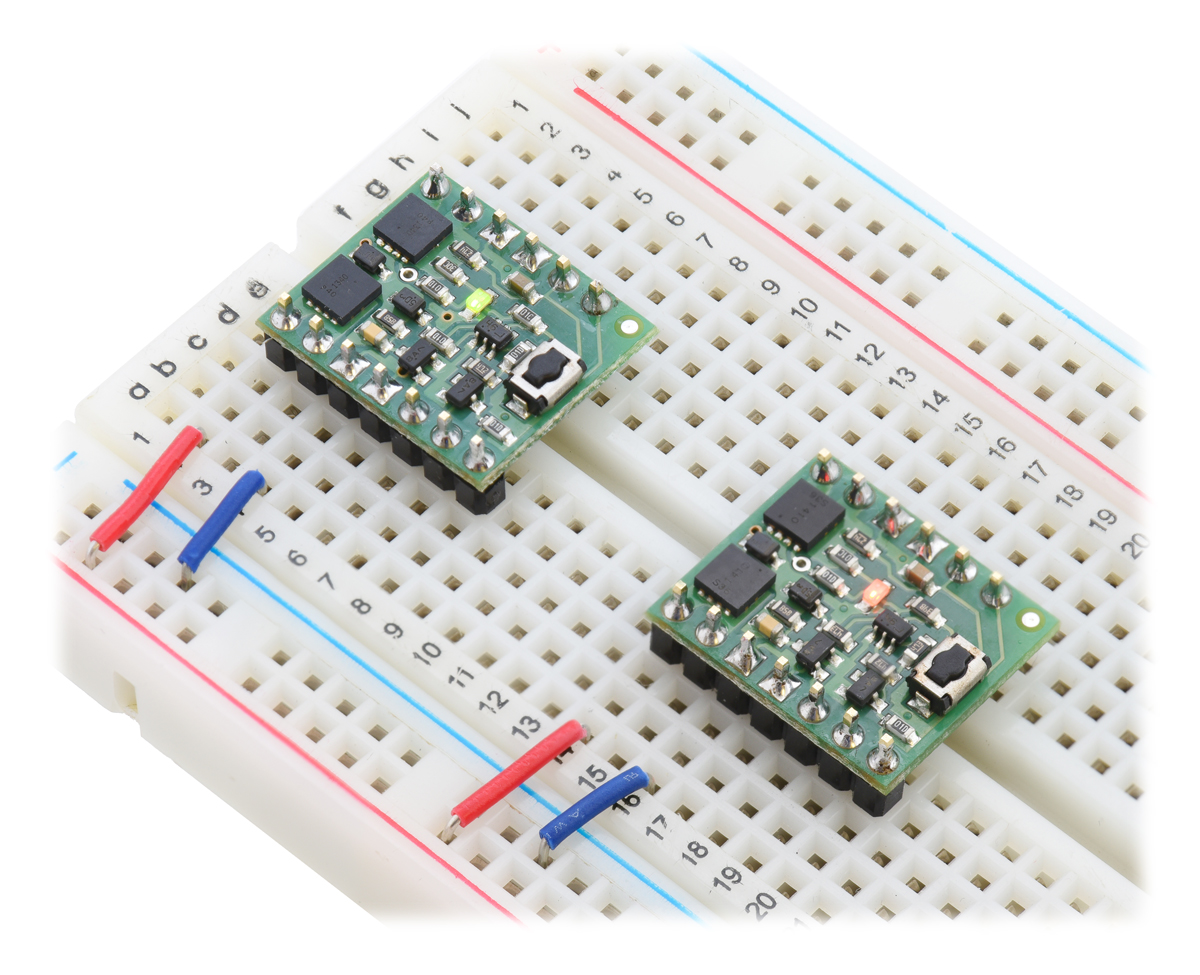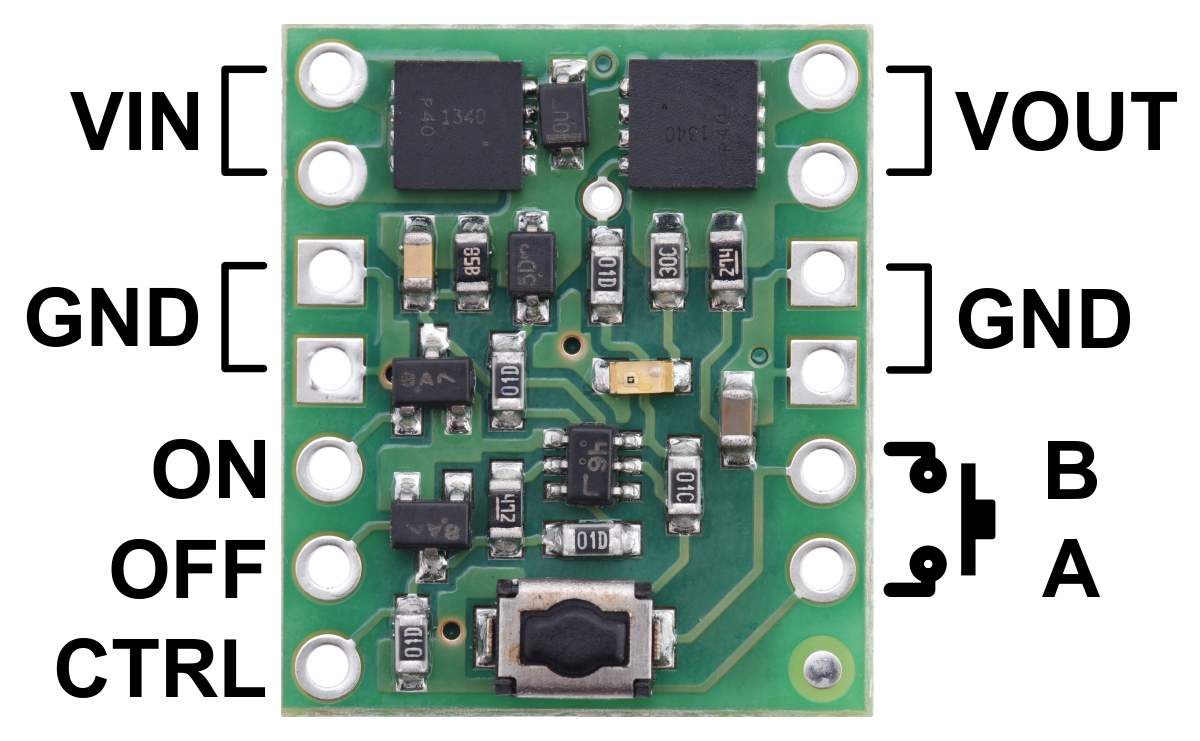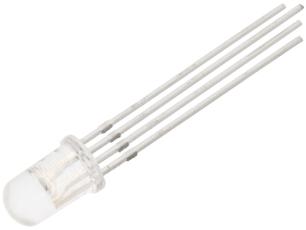Product description
Electronic solid-state switch with smart features for safe control of devices.
The current is controlled using a momentary switch: one press turns it on, another press turns it off. Control inputs enable automation, either through automatic shutdown triggered by the powered device, or via microcontrollers, Raspberry Pi, microswitches, reed relays, etc.
Since momentary switches are used, multiple buttons and control sources can be connected in parallel. The switch’s internal circuit filters contact bounce, but heavily bouncing switches (several milliseconds) may cause issues.
A momentary switch is preinstalled. Connection points for external switches are provided, along with separate inputs for ON and OFF control — suitable for applications such as emergency stop buttons. As the control signal draws very little current, virtually any type of switch can be used.
The switch has built-in reverse polarity protection and can safely switch voltages from 2.2 to 20 V, handling currents up to 6 A (note: it may become warm under high loads). Powered directly by the voltage it is intended to switch.
Connections:
- A: Connect to B through a momentary switch to toggle the switch state.
- B: (see A)
- ON: A high pulse (> 1 V) closes the switch.
- OFF: A high pulse (> 1 V) opens the switch.
- CTRL: Directly controls the switch. A high pulse (> 1 V) closes the switch, a low pulse (grounded) opens it. Leave floating when not in use. Note: Do not pulse CTRL and OFF simultaneously.
Advantages over mechanical switches:
- Compact design
- Built-in reverse polarity protection
- Allows multiple switches in parallel
- Eliminates contact bounce, providing clean signals
- Limits current spikes from inductive loads
- Automatic shutdown via OFF input
- Control from microcontrollers, timers, etc. via ON and CTRL inputs
- Fits breadboards and prototyping boards
- Built-in status LED
Disadvantages compared to mechanical switches:
- Polarized – current cannot flow from VOUT to VIN
- Limited operating voltage range
- Switch may lose state when powered off; normally starts in off-state but may occasionally start in on-state under high voltages
- Only suitable for switching DC (unstable under heavy AC or noise)
- Isolation is not complete when switched off

